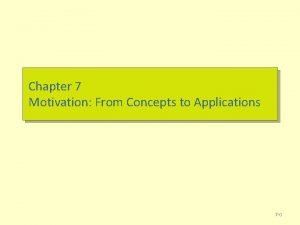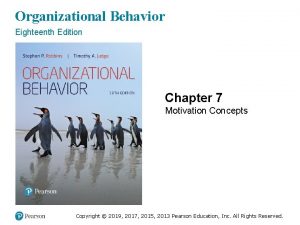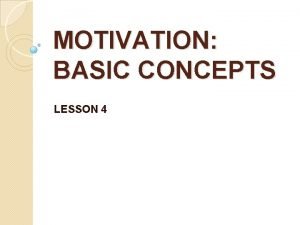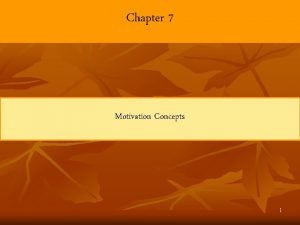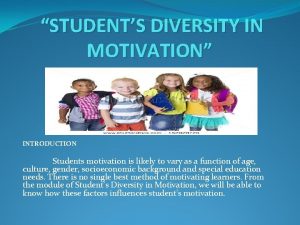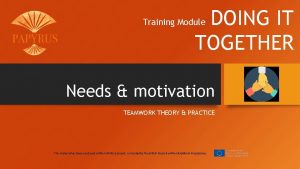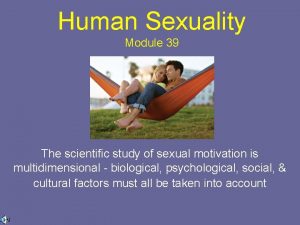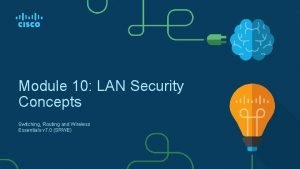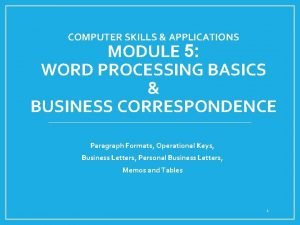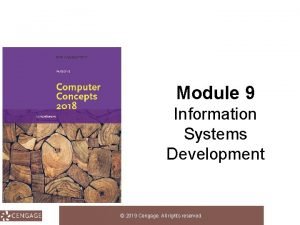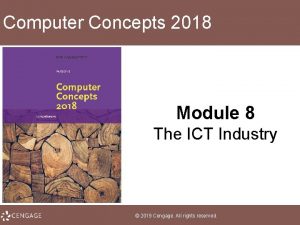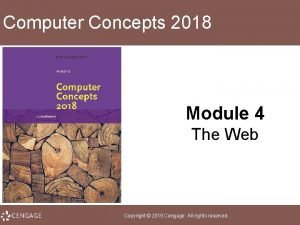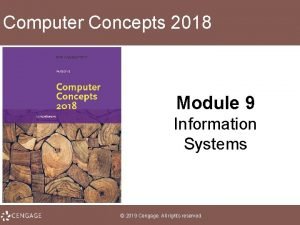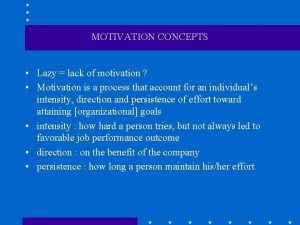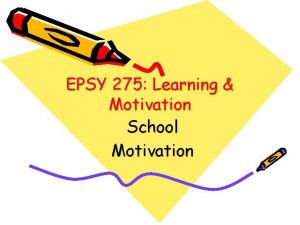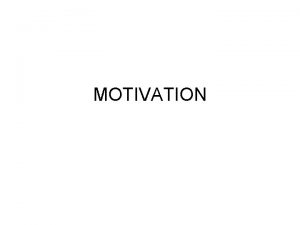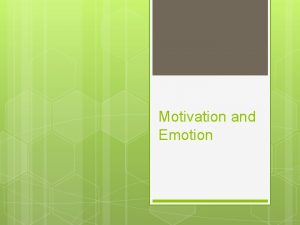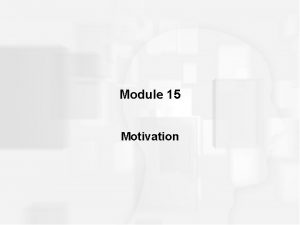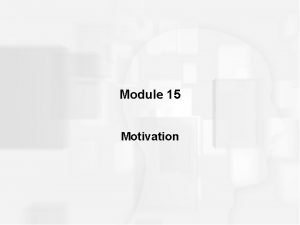MODULE 37 MOTIVATIONAL CONCEPTS 37 1 Define motivation













- Slides: 13

MODULE 37 MOTIVATIONAL CONCEPTS

37. 1 Define motivation as psychologists use the term and identify the perspective useful for studying motivated behavior. • Motivation: need/desire that energizes and directs behavior 4 perspectives: • Instinct Theory (Evolutionary Theory): genetically predisposed behavior • Drive Reduction Theory: see homeostasis • Arousal Theory: seeking stimulation (Yerkes-Dodson) • Maslow’s Hierarchy of Needs: What of the levels/stages are the most important?

Instincts and Evolutionary Perspective • Due to Darwin came the idea to classify many behaviors as instincts • Instinct: unlearned but complex behavior that is ingrained in a species (reflexes) • Evolutionary psychology: genes do predispose our behaviors

Drives and Incentives • Drive Reduction theory: a physiological need creates tension/arousal (drive) that organism wants to satisfy • Seek homeostasis: balanced internal state • Also seek incentives: (extrinsic/intrinsic) positive or negative environmental stimuli that motivates behavior • Combined with needs=feel strong drive

Optimum Arousal • Sometimes we seek more arousal • Yerkes-Dodson: performance increases with arousal up to a point, too much arousal becomes a detriment

Hierarchy of Motives (Maslow) • Some needs are more important at some points

MODULE 38 HUNGER MOTIVATION

38. 1 Describe the physiological factors that produces hunger • Body Chemistry and the Brain • Major source of energy is glucose: sugar that is used by body for energy. Low=hungry • Stomach, intestine, and liver work with brain • Hypothalamus—influences eating • Neural arc secretes appetite stimulating hormone, another arc secretes the opposite • Lateral hypothalamus: causes you to eat • Ventromedial hypothalamus: causes you to feel satisfied • Registers chemicals/hormones: (next slide)

• Ghrelin: hunger arousing hormone. • Insulin: controls glucose, secreted by the pancreas • Leptin: causes metabolism to increase and hunger to decrease, secreted by actual fat cells • Orexin: increases hunger, secreted by hypothalamus • PYY: tells the brain you are no longer hungry, produced by digestive tract

Weight Thermostat • We hover around a set point: a “weight” for an individual that controls metabolism and weight loss • Basal metabolic rate: resting rate of energy being burned

38. 2 What cultural and situational factors influence hunger • Taste Preferences: Biology and Culture • Carbs/sweets boost serotonin…calming • Sweet/salty: genetic and universal • Conditioning can change taste • Culture teaches “acceptable” foods • Biological/environment influence taste

Situational Influences on Eating • Ecology of eating • Eat more with others • Unit bias—difference between Europeans/Americans • Food Variety • Eat more when offered more

Environmental Factors of Obesity • Sleep loss: vulnerable to weight gain • Lowers leptin to report fat levels to the brain and increases ghrelin
 Motivation from concepts to applications
Motivation from concepts to applications Organizational behavior chapter 7
Organizational behavior chapter 7 Basic concepts of motivation
Basic concepts of motivation Motivation to learn an overview of contemporary theories
Motivation to learn an overview of contemporary theories Motivation module for students
Motivation module for students Teamwork training module
Teamwork training module Module 39 sexual motivation
Module 39 sexual motivation Stp manipulation attack
Stp manipulation attack Word processing packages
Word processing packages Module 5 computer concepts exam answers
Module 5 computer concepts exam answers Module 9 computer concepts exam
Module 9 computer concepts exam Copyright search
Copyright search Module 9 computer concepts
Module 9 computer concepts C device module module 1
C device module module 1
